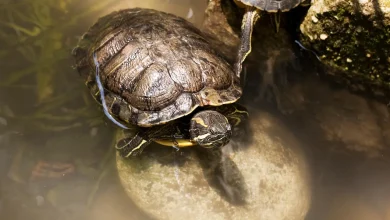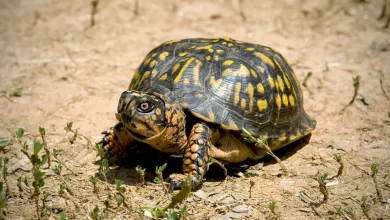Hibernating Box Turtles
Box turtles are a bit more exotic than common pets like dogs and cats, and there are some unique challenges that their owners have to deal with. One example is hibernation. Dog and cat owners certainly don’t have to worry about the time of year when their pets fall asleep for weeks or months at a time.
Why Do Turtles Hibernate?
Box turtles are still undomesticated. They are still primarily wild animals and even those in captivity hold onto their basic instincts from the wilderness.
Table of Contents
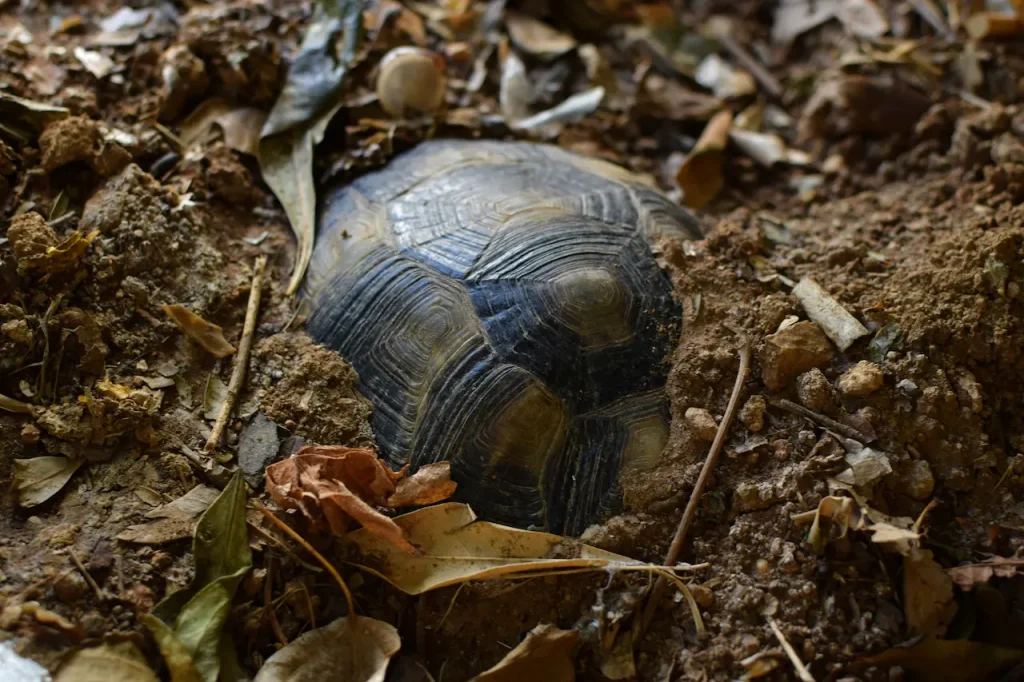
In the wild, there are several months of every year in which survival becomes harder. The temperature drops, causing plants to wilt and bugs to be less plentiful. As reptiles, they are also incapable of producing their body heat. For these reasons, turtles cannot function well during cold months.
They essentially “skip” these bad months, waking up once food becomes more plentiful again and the sun is shining once more.
What Happens While They Hibernate?
To survive for so long without nourishment, the box turtle’s body essentially shuts down. All of their organs change pace so that they are providing the most minimal output possible while still maintaining life.
Their bodies will cease movement to the point that they cannot move at all until the hibernation is complete.
Hibernation is a delicate process, and turtles can die from it if it isn’t done right.
When Does Hibernation Start
The exact time your turtle starts hibernating will vary. It depends on where you live and what kind of box turtle you own.
Typically, the process will start sometime between the middle of September and the middle of October.
You will know it is coming because your turtle will start eating less and become outwardly lazy. When they know they’re going to be hibernating soon, they stop using energy to hunt and focus more on conserving the fat already in their body. They also do this because their gastrointestinal tract needs to be clear before hibernation.
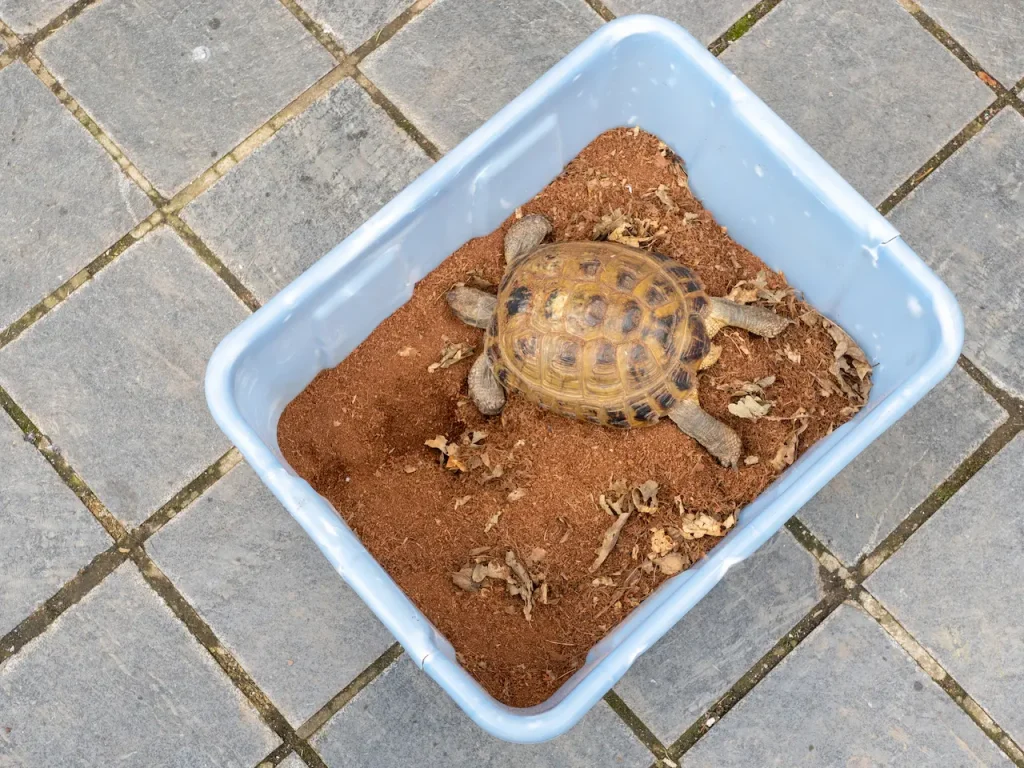
How Long Does it Last
Box turtles from North America tend to hibernate for three to four months.
Do I need to Feed and Water my Turtle During Hibernation?
You should stop feeding your turtle for fourteen days before they start hibernating. As mentioned earlier, their gastrointestinal tract must be clear for hibernation.
You do not want to feed your turtle either before or during hibernation, but hydration is still important; so give them continued access to water.
Box turtles always like to soak, but long soaking sessions are especially important to them in the weeks just before hibernation.
You should keep clean water in their cage during the duration of their hibernation, in case they wake up early and need a drink.
Turtles That Shouldn’t Hibernate
Not all box turtles are capable of taking on the challenge of hibernation. They need to be very healthy to go so long without food; even in an inactive state.
Young turtles typically do not need to hibernate for their first few years of life. Most wild box turtles die during their first winter because hatchlings have such a hard time surviving hibernation.
Underweight turtles are at a high risk. While hibernating, the box turtle uses their existing body weight for sustenance. An underweight turtle may not have enough in their body to sustain themselves.
Sick box turtles should also not hibernate.
As fall approaches, you should get your turtle to the vet for a pre-hibernation checkup.
If your turtle can’t hibernate, you must keep them indoors during the cold months.
How to Set it Up for Them
In the wild, turtles can take care of hibernation themselves. In captivity, there’s a lot you’re going to need to do for them.
First of all; you need an actual spot for them to hibernate in. In the wild, box turtles hibernate in all kinds of hiding places. An easy one for you to set up is getting some properly shredded newspaper and moss for them to burrow into. You should be able to find special moss at pet stores for this purpose; it contains some moisture that helps hydrate your turtle during hibernation.
If you have an outdoor enclosure, make sure their hibernation spot cannot flood. Hibernating box turtles are also often the victims of predators who are desperate for food in the winter. Take extra care to make sure your enclosure is secure from threats.
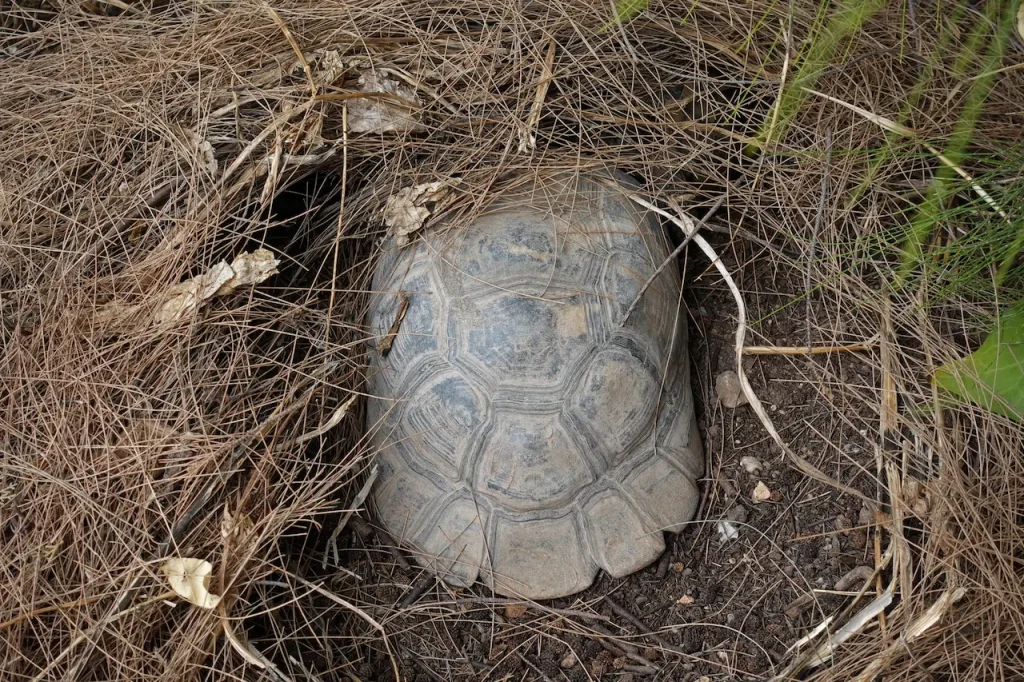
If your turtle is kept indoors, hibernation is a bit more awkward. Some indoor box turtles won’t hibernate at all since their environment is a more controlled one. Temperatures and lighting are more consistent, and so they aren’t as aware of winter.
If your indoor turtle does hibernate, you must simulate the coming of winter within their tank to an extent. This mostly means a change in heating. Some owners move their hibernating turtle into a room or closet that isn’t heated such as a garage.
Checking on Them
As has been stated many times, hibernation is a delicate process. For this reason, you want to check on your turtle a lot. If they wake up early, you want to make sure that you notice. This doesn’t mean you should try to force them to continue hibernating, but you want to catch it early so you can start feeding them. Don’t assume they’ll be asleep for four months and never check your outdoor enclosure.
Another thing you want to check if you have an outdoor enclosure is signs of animals trying to get into it. Look for signs that something might be scratching at the base or gnawing at the wire mesh.
You should weigh your turtle every few weeks during hibernation. Gently take them out of their resting space, and check their weight. You should weigh them before they start hibernating for a base of comparison. Box turtles tend to lose one or two per cent of their body weight during hibernation. If they lose much more than this, you should end their hibernation early.
